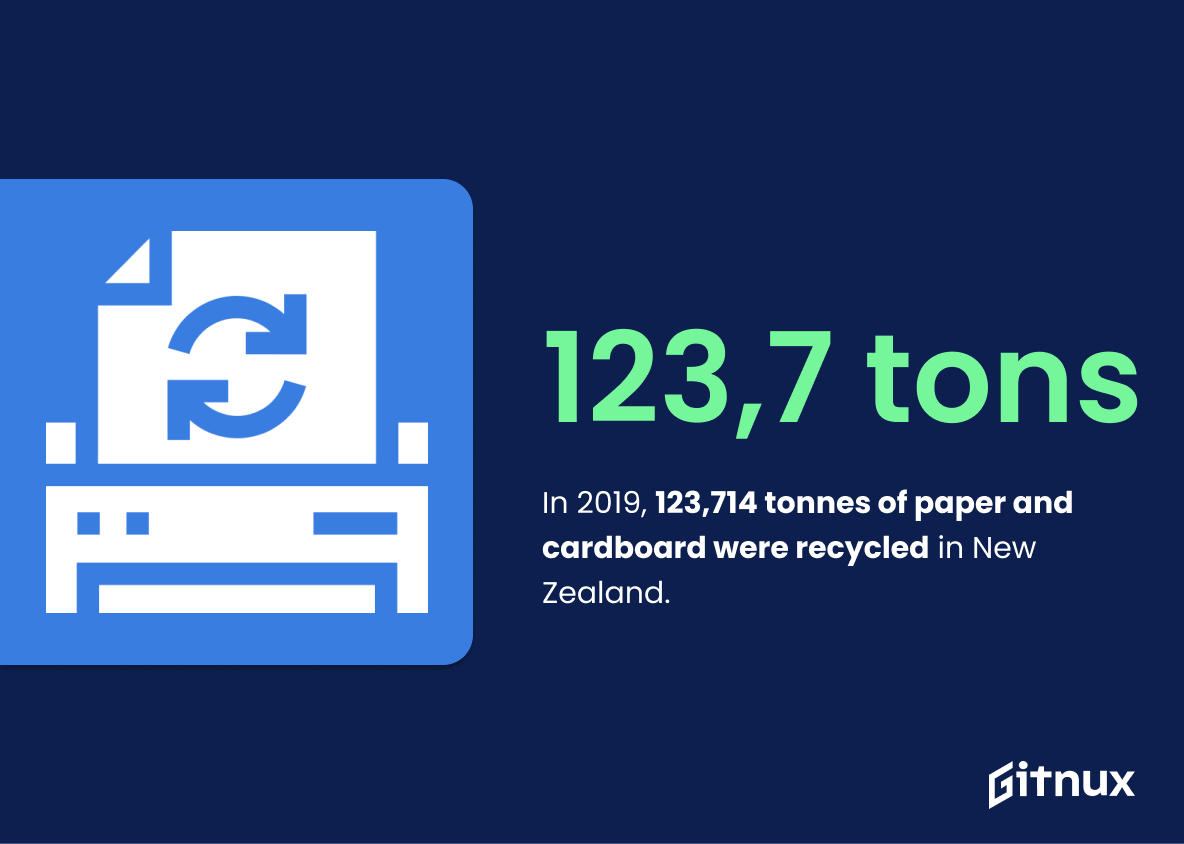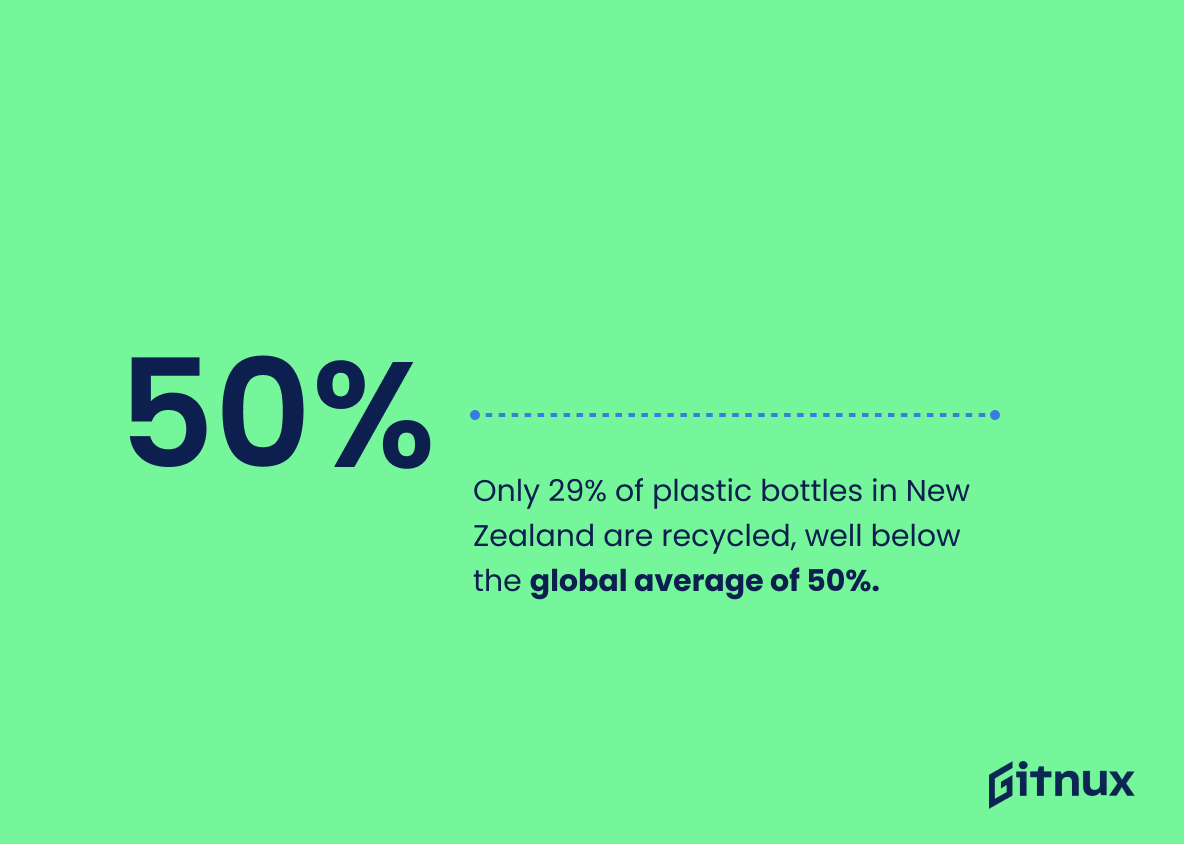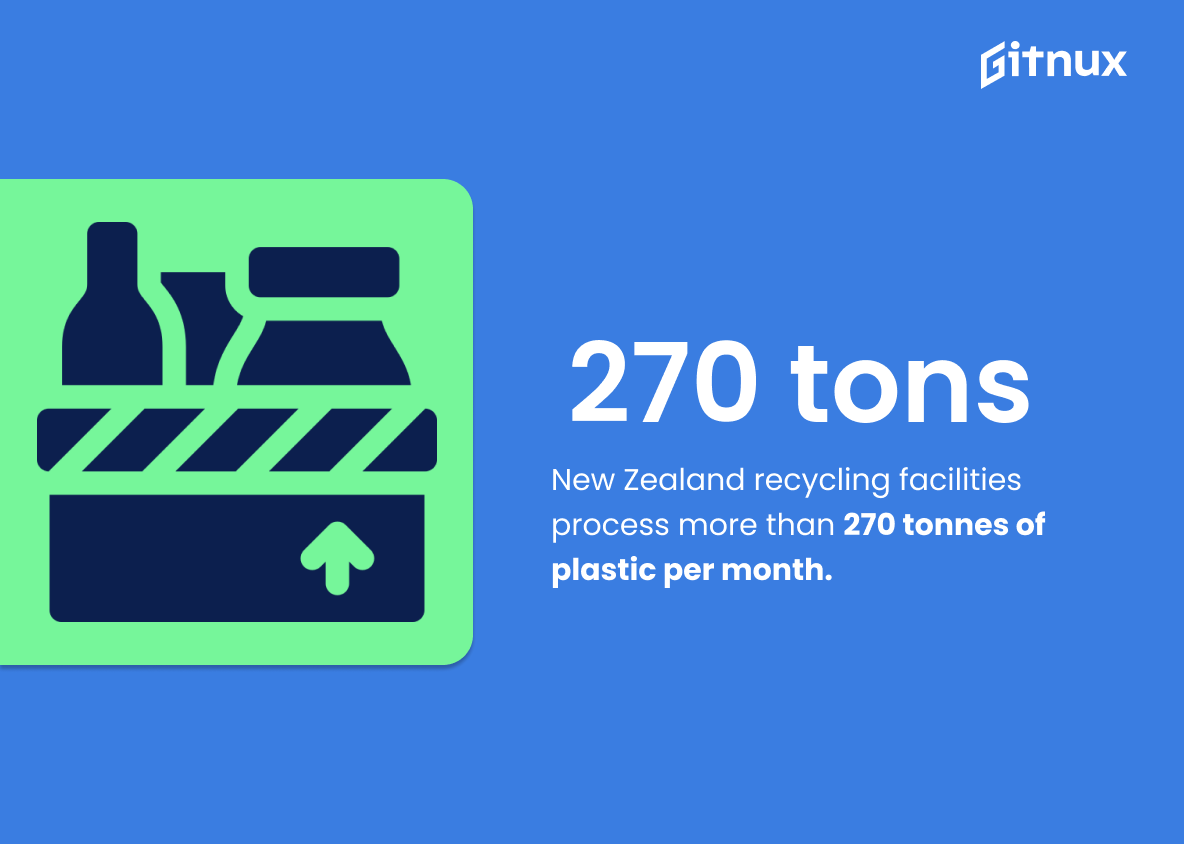New Zealand is making great strides in its efforts to reduce waste and increase recycling. In 2020, approximately 413,000 tonnes of waste was recycled in New Zealand. This number has been steadily increasing over the years as more people become aware of the importance of reducing their environmental footprint through proper disposal and reuse methods.
In addition to this impressive figure, New Zealanders use about 1.76 billion plastic containers each year with 58% having access to curbside recycling services for these items. Furthermore, 123,714 tonnes of paper and cardboard were recycled in 2019 while 640,000 tonnes of packaging are consumed annually with 60% being recycled domestically or overseas.
Aluminum beverage cans have a high rate at 76%, electronic waste diverted from landfill reached 11300 tons last year; glass had an even higher rate at 72%; 578 000 tones per year are collected for plastic but only 8 % is processed locally; 7100 tons tires were also recovered during 2020; 370 public facilities exist across NZ plus 800 soft plastics drop-off points where 50 966 tones PET products can be deposited monthly – 4 % total wastes sent abroad for processing – 81 % steel packages recovery achieved by 2021 along 200 licensed battery recyclers nationwide .
These statistics demonstrate that there is still much work left to do when it comes to improving our nation’s recycling rates but they also show how far we’ve come since beginning our journey towards sustainability.
New Zealand Recycling Statistics Overview
In 2019, 123,714 tonnes of paper and cardboard were recycled in New Zealand.
This statistic is a testament to the success of New Zealand’s recycling efforts. It shows that the country is making strides towards reducing its environmental impact and creating a more sustainable future. By recycling paper and cardboard, New Zealand is helping to reduce the amount of waste that ends up in landfills and oceans, and is taking a proactive approach to preserving the planet. This statistic is a reminder of the importance of recycling and the positive impact it can have on the environment.
Around 40% of New Zealand’s landfilled waste is composed of organic materials, which could be composted or reused.
This statistic is a stark reminder of the amount of organic materials that are being needlessly thrown away in New Zealand. It highlights the potential for composting and reuse of these materials, which could help reduce the amount of waste going to landfill and benefit the environment.
Only 29% of plastic bottles in New Zealand are recycled, well below the global average of 50%.
This statistic is a stark reminder of the need for New Zealand to step up its recycling efforts. With the global average of 50%, New Zealand is lagging far behind in its efforts to reduce plastic waste and protect the environment.
New Zealand has more than 800 soft plastic recycling drop-off points across the country.
This statistic is a testament to New Zealand’s commitment to recycling and sustainability. With more than 800 soft plastic recycling drop-off points, New Zealanders have easy access to a convenient way to recycle their plastic waste. This is a great example of how New Zealand is leading the way in environmental protection and sustainability.
In 2019, New Zealand recycled 50,966 tonnes of PET plastic products.
This statistic is a testament to the success of New Zealand’s recycling efforts. It shows that the country is making strides towards reducing its environmental impact and creating a more sustainable future. The 50,966 tonnes of PET plastic products recycled in 2019 is a significant amount, and it demonstrates that New Zealand is taking the initiative to reduce its waste and conserve resources.
New Zealand recycling facilities process more than 270 tonnes of plastic per month.
This statistic is a testament to the impressive efforts of New Zealand’s recycling facilities in tackling the plastic waste crisis. It highlights the sheer amount of plastic that is being recycled each month, demonstrating the commitment of the country to reduce its environmental impact. This statistic is a powerful reminder of the importance of recycling and the positive impact it can have on the environment.
Approximately 4% of New Zealand’s total waste is sent overseas for recycling.
This statistic is a stark reminder of the need for New Zealand to take responsibility for its own waste. It highlights the fact that, despite the country’s efforts to recycle, a significant portion of its waste is still being sent overseas for processing. This is a concerning trend, as it means that New Zealand is not doing enough to reduce its own environmental impact.
Conclusion
New Zealand is making great strides in its recycling efforts, with a range of initiatives and programs being implemented to reduce the amount of waste sent to landfill. In 2020, approximately 413,000 tonnes of waste was recycled in New Zealand – an impressive figure that demonstrates how much progress has been made over recent years. Plastic containers are one area where significant improvements have been seen; 1.76 billion plastic containers were used by New Zealanders last year alone but 58% had access to curbside recycling services which helped divert this material from landfills.
Paper and cardboard also saw high levels of recovery at 123,714 tonnes for 2019 while 640,000 tonnes of packaging was consumed annually with 60% being recycled back into new products or materials. Aluminum beverage cans achieved a 76% rate for recycling as well as 11300 tonnes diverted from electronic waste going into landfill during 2020 – both positive results that show the commitment towards sustainability within the country’s borders. Glass rates reached 72%, PET plastics 50966 tons and soft plastics 270 tons per month all demonstrate further success stories when it comes to reducing our environmental impact through reuse rather than disposal methods such as incineration or burying items underground forevermore. Finally 4 percent total wastage sent overseas shows just how far we still need go before reaching zero-waste status here in NZ – something many countries around world strive achieve too.
References
0. – https://www.comcom.govt.nz
1. – https://www.mfe.govt.nz
2. – https://www.abc.net.au
3. – https://www.stats.govt.nz
4. – https://www.recycling.kiwi.nz







